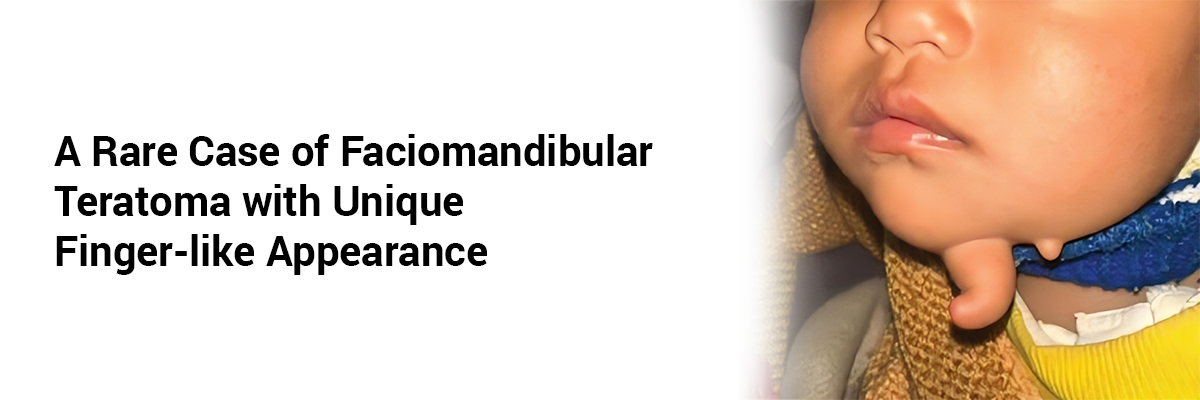
 IJCP Editorial Team
IJCP Editorial Team
A Rare Case of Faciomandibular Teratoma with Unique Finger-Like Appearance
Introduction
Teratomas are rare congenital neoplasms containing tissues derived from all three germ layers. While sacrococcygeal teratomas are the most common, head and neck teratomas constitute only 2%–9% of all cases. Within this category, faciomandibular teratomas are exceedingly rare, with very few cases reported worldwide. Early diagnosis is critical due to potential airway obstruction and feeding difficulties.
Case Presentation
We report the case of a 3-month-old Nepalese infant who presented with a striking pedunculated growth arising from the chin, resembling an accessory finger. The lesion was present since birth and had gradually enlarged. The infant experienced difficulty during breastfeeding but no respiratory distress.
On examination, the mass measured approximately 4 cm in length, firm in consistency, non-tender, and covered by normal skin. Radiographic imaging revealed no bony involvement. Ultrasonography demonstrated a heterogeneous soft tissue mass without vascular invasion. Laboratory workup, including alpha-fetoprotein (AFP) levels, was within normal limits.
Surgical excision was performed under general anesthesia, and the mass was removed in toto. Histopathological examination confirmed a mature teratoma containing ectodermal (skin, hair follicles), mesodermal (cartilage, muscle), and endodermal (glandular) components. Postoperative recovery was uneventful, and the infant showed improved feeding and weight gain at follow-up.
Discussion
Faciomandibular teratomas are exceptionally rare congenital tumors. Their clinical presentation may mimic dermoid cysts, accessory digits, or other craniofacial malformations. Potential complications include airway obstruction, feeding difficulties, and cosmetic deformity. Imaging studies are essential to evaluate extent and exclude deeper involvement. Complete surgical excision remains the treatment of choice, with excellent prognosis in cases of mature teratoma.
Conclusion
This case highlights a rare presentation of faciomandibular teratoma manifesting as a finger-like projection on the chin of a Nepalese infant. Awareness of such atypical presentations is crucial for timely diagnosis and management, ensuring good functional and cosmetic outcomes.

IJCP Editorial Team
Comprising seasoned professionals and experts from the medical field, the IJCP editorial team is dedicated to delivering timely and accurate content and thriving to provide attention-grabbing information for the readers. What sets them apart are their diverse expertise, spanning academia, research, and clinical practice, and their dedication to upholding the highest standards of quality and integrity. With a wealth of experience and a commitment to excellence, the IJCP editorial team strives to provide valuable perspectives, the latest trends, and in-depth analyses across various medical domains, all in a way that keeps you interested and engaged.


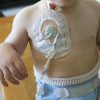
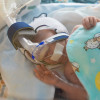
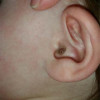





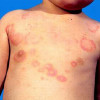
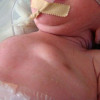


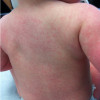


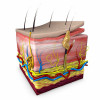
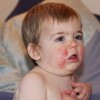

Please login to comment on this article